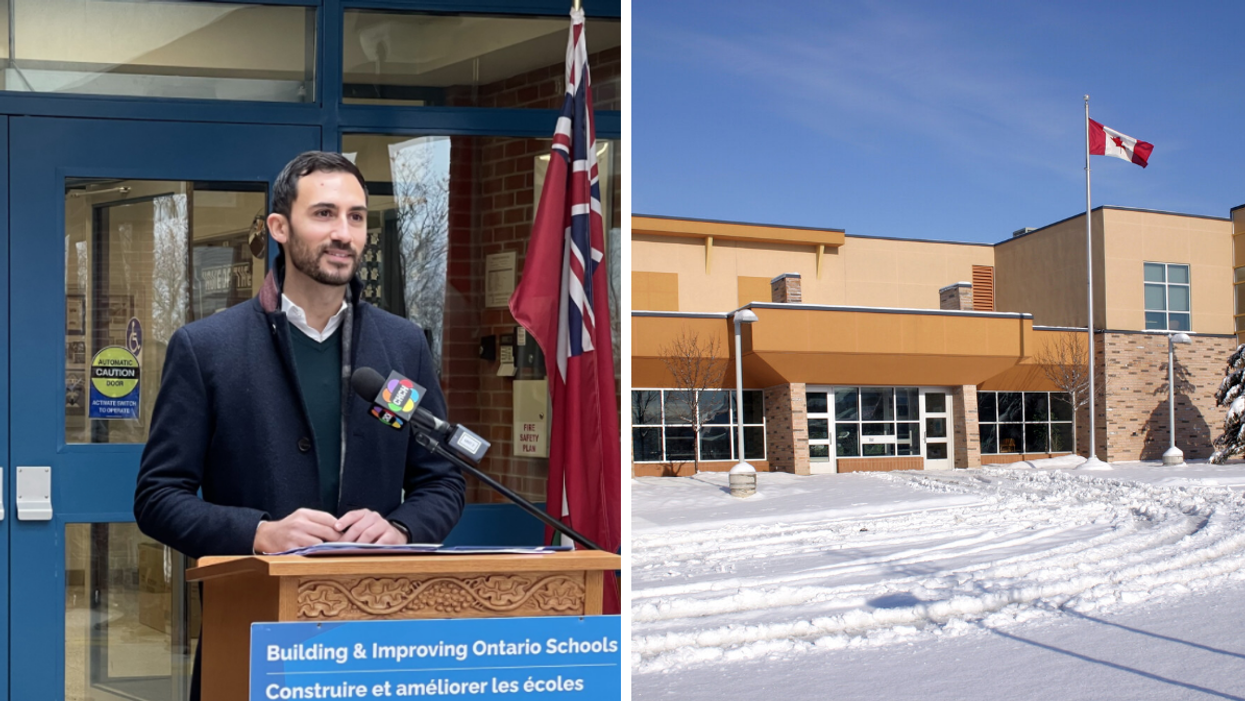Ontario's Science Curriculum Is Getting A Total Makeover & Here's What Will Change
The new curriculum will hit the books next school year!

Minister of Education Stephen Lecce. Right: An exterior shot of an elementary school.
What some of Ontario's students will learn next year will be completely different than what they have ever learned before, as the provincial government announced they will be making some major changes to the science curriculum.
Poised to start in September 2022 in time for the next school year, students between grades 1 and 8 will be taught a revised science and technology curriculum.
On top of that, students in grade 9 will be offered a new de-streamed science course, which the government said during their March 8 announcement is part of their "commitment to modernizing education and preparing students for success beyond the classroom."
So, why are they changing things now?
The last time Ontario updated the elementary school science curriculum was 15 years ago back in 2007, and changes to grade 9's science course were last made in 2008.
What will be taught next year?
There will be four new areas of learning for Ontario's students:
- STEM skills, connections, and careers
- Engineering design process
- Coding, emerging technology and skilled trades
- Environmental protection
With STEM skills, students will apply science, tech, engineering and math concepts to real-world issues that deal with what's happening in society, the economy and the environment. Students in grade 9 will also explore STEM-related careers, including ones in skilled trades.
Engineering design process will allow students to invent, design and come up with innovative solutions to issues that can be solved by science and technology. In environmental protection, they will learn and think of possible solutions to save the environment for the years to come and learn about how to reduce greenhouse gas emissions.
Students will learn coding skills and explore how science and emerging technologies impact them and the future of careers.
So, what has changed?
In 2007, there were no explicit coding, engineering design processes or emergent technologies expectations, and there was no learning about skilled trades.
Now, there will be coding expectations for grades 1-8. Students will use engineering design processes to do a variety of things like design and test solutions to problems. They will also use coding to look at the impact of emerging technologies like artificial intelligence.
Students in grades 1-3 will learn about connections to the skilled trades and the practical nature of that kind of work, while grades 4-8 will learn how to practically apply science and tech concepts in these trades and more.
In 2007, the government says there was "limited climate change learning," but now, students will learn about how to protect the world they live in and how they can reduce greenhouse gases.
The revised curriculum will also have more learning about food literacy and enhanced learning of Indigenous perspectives.
This article's right-hand cover image was used for illustrative purposes only.
- Ontario Is Set To Get Rid Of Applied & Academic Streams For Grade ... ›
- Ontario's Grade 9 Math Curriculum Has Everything You Wished You ... ›
- Ontario To Make Indigenous Learning Mandatory In Grades 1 To 3 ... ›
- Ontario's Education Workers Just Voted 96.5% In Favour Of Strike & Here's What It Means - Narcity ›
- Ontario Is 'Modernizing' Tech & Computer Studies Courses In High Schools Starting In 2023 - Narcity ›
